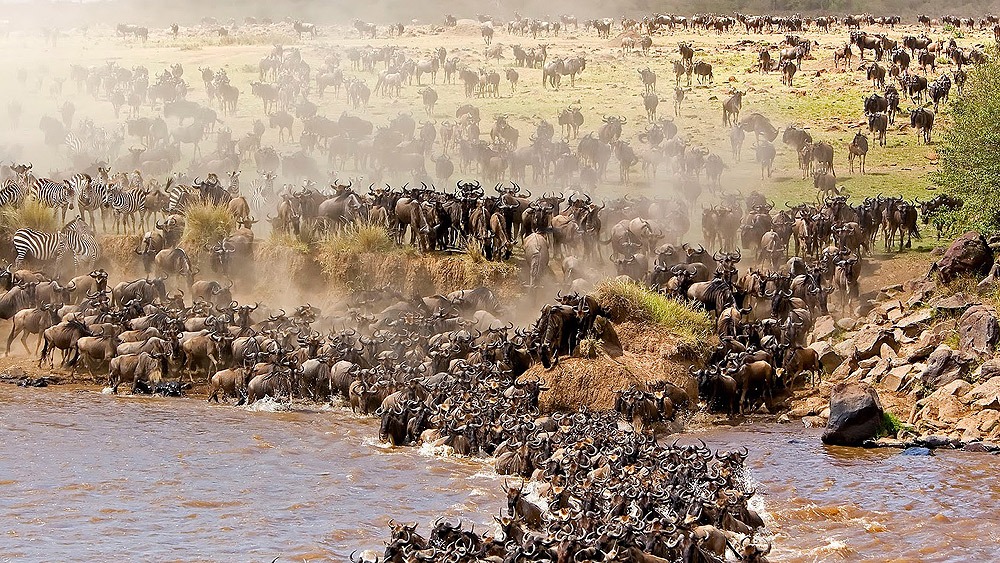Serengeti wildebeest migration Overview
The Serengeti wildebeest migration is one of the most awe-inspiring natural phenomena in the world, attracting visitors from all over the globe. Every year, over two million wildebeest, zebras, and gazelles move in a circular pattern across the Serengeti ecosystem, covering a distance of around 1,800 miles.
The migration starts in the southern Serengeti in January and February, when the wildebeest give birth to their young. This period is known as the calving season, and it is an extraordinary time to witness the birth of thousands of wildebeest calves. The wildebeest choose the southern Serengeti plains because the grass here is fresh and green, providing abundant nutrition for the mothers and their young.
As the dry season sets in around May, the wildebeest start moving northwest towards the Western Corridor and Grumeti River. This is a critical time for the wildebeest as they must cross the crocodile-infested Grumeti River to continue their journey. This river crossing is a dramatic and perilous event, as the wildebeest must navigate the strong currents and avoid the jaws of the waiting crocodiles.
By late June and early July, the wildebeest have reached the northern Serengeti and are preparing for their next river crossing, this time at the Mara River, which marks the border between Tanzania and Kenya. The river crossing is even more challenging at the Mara River, as the wildebeest must navigate the steep banks and strong currents, while also avoiding predators such as lions and hyenas.
Once the wildebeest have crossed the Mara River, they enter the Masai Mara National Reserve in Kenya, where they spend the next few months grazing on the lush grasses of the Mara. This area is also home to large populations of predators such as lions, cheetahs, and leopards, which prey on the wildebeest and other herbivores.
As the dry season sets in around October, the wildebeest start moving back towards the Serengeti, following the rains and fresh grass. They must cross the Mara River once again, this time in the opposite direction, facing the same challenges as before. By November and December, the wildebeest have returned to the southern Serengeti, where the cycle begins again with the next calving season.
The Serengeti wildebeest migration is an extraordinary sight that showcases the incredible resilience and adaptability of these animals. The migration is not just a spectacle for tourists; it is a matter of life and death for the wildebeest and the ecosystem as a whole.
The wildebeest play a critical role in maintaining the balance of the Serengeti ecosystem, as they are responsible for cycling nutrients and stimulating new growth in the grasslands. The migration also supports a diverse range of predators and scavengers, such as lions, hyenas, vultures, and jackals, which rely on the wildebeest as a source of food.
If you are planning a Tanzania Safari Serengeti, timing is essential to witness the wildebeest migration. The best time to see the migration in the southern Serengeti is from January to March, during the calving season. To witness the river crossings, the best time to visit is from June to September, when the wildebeest are crossing the Grumeti and Mara Rivers.
In conclusion, the Serengeti wildebeest migration is a remarkable natural phenomenon that showcases the beauty and complexity of the natural world. It is an event that should be experienced at least once in a lifetime, and it underscores the importance of conservation efforts to protect the delicate balance of the Serengeti ecosystem for future generations to enjoy.

